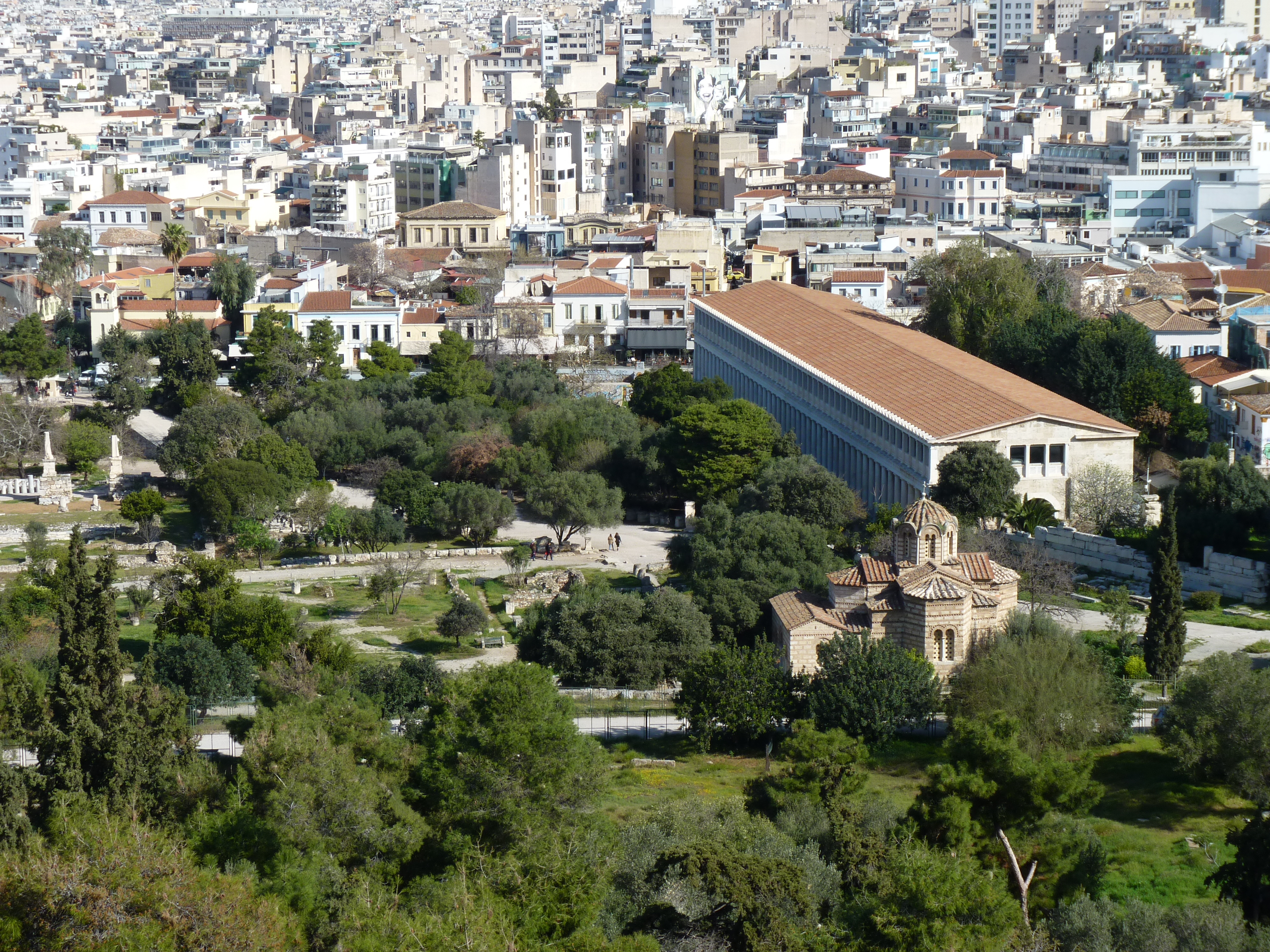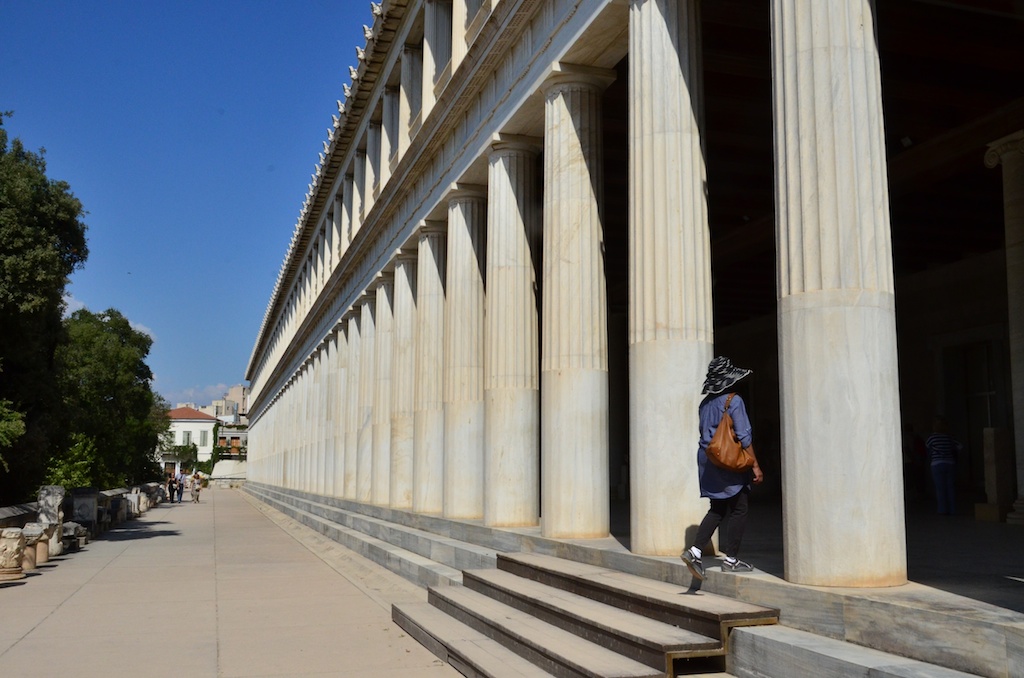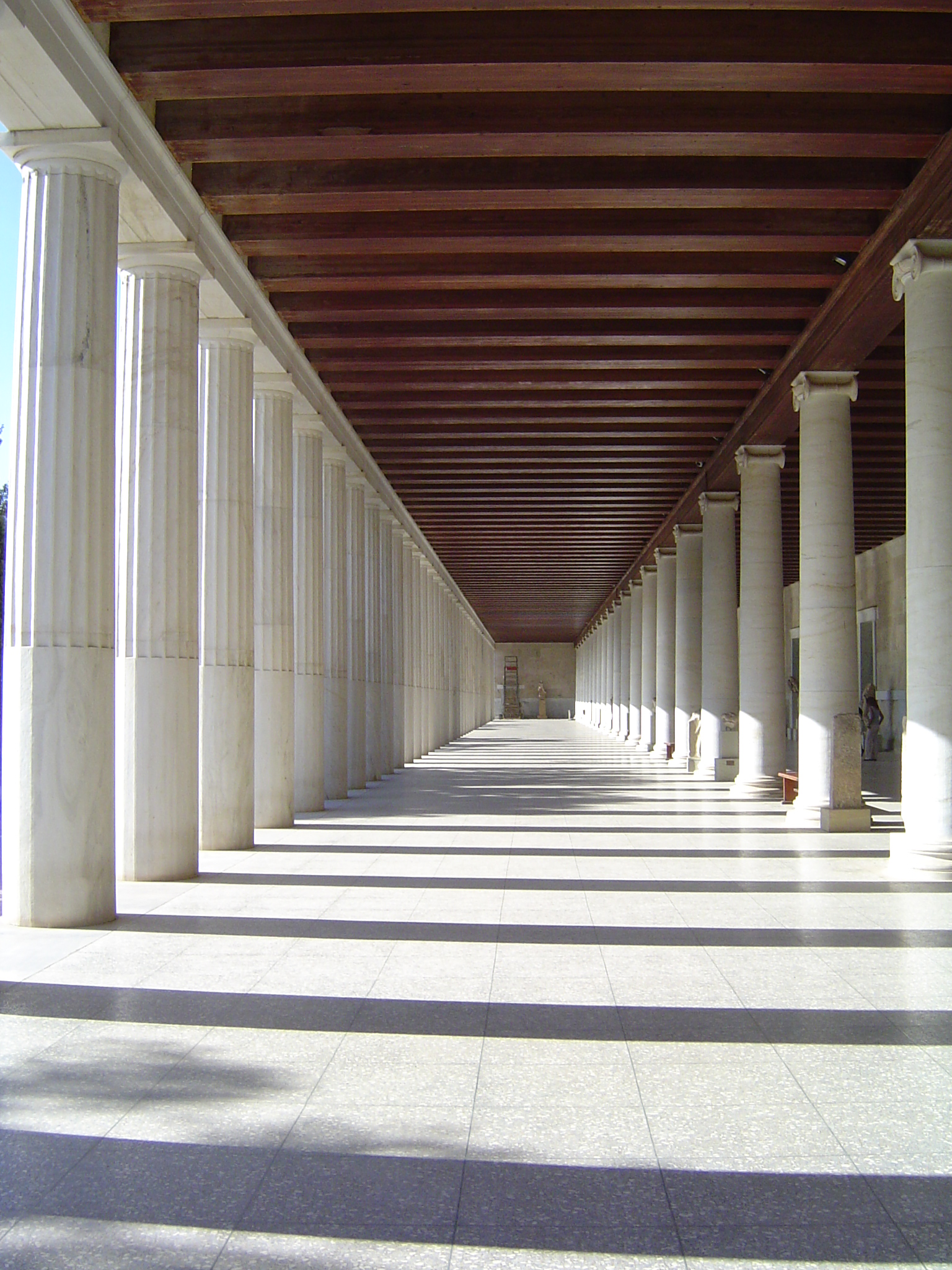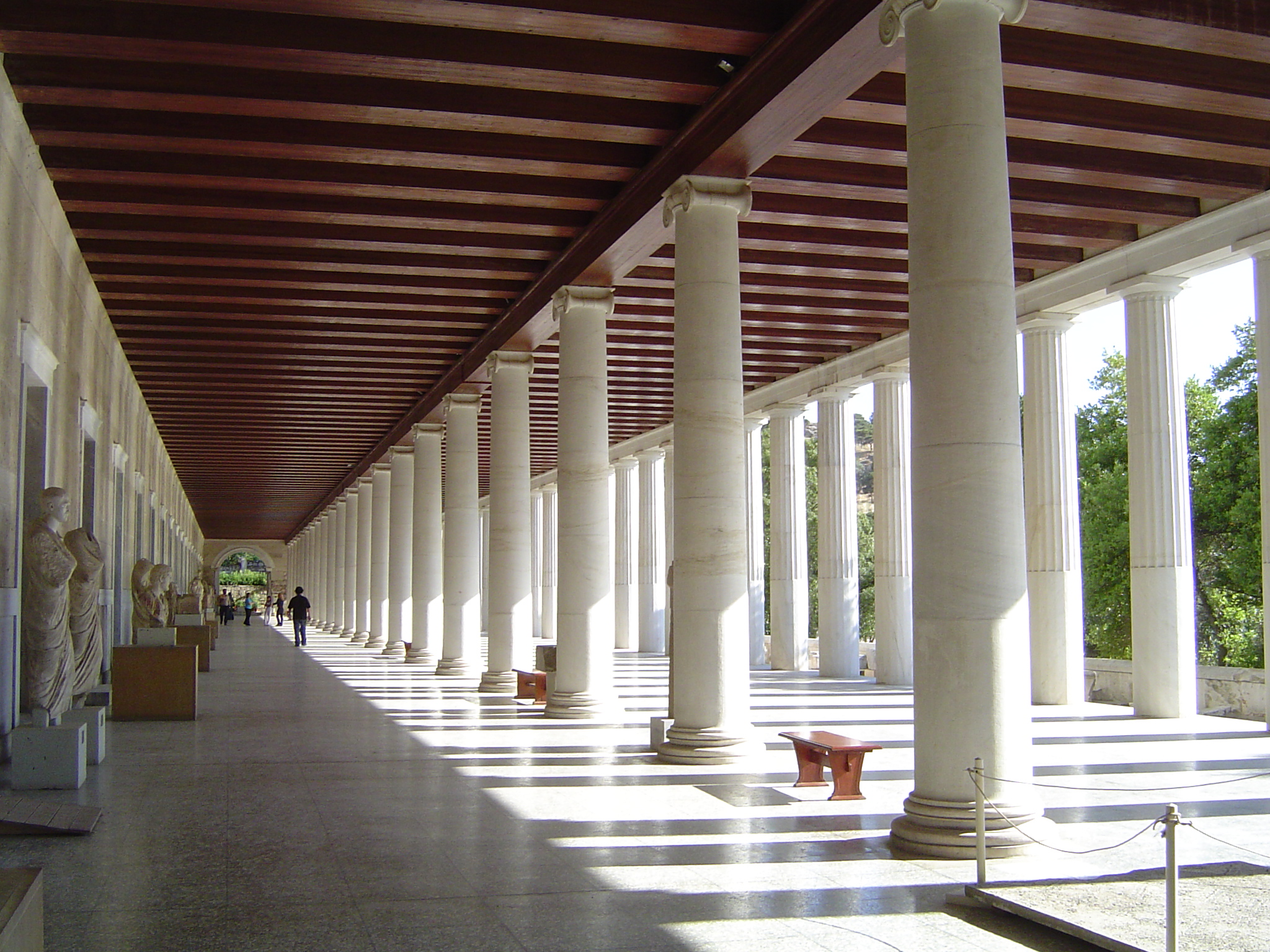Stoa of Attalos II, UNKNOWN DESIGNER, Greek, ATHENS, Greece, 150 BC
add: captions & vocab links

Image 1: View of the Stoa of Attalos

Image 2:Plan Drawing of the Stoa of Attalos showing open air

Image 3: View of Columns in the Stoa of Attalos

Image 4: View of corridor in the Stoa of Attalos

Image 5:Enclosed interior area with colonnade space
A stoa is a row of columns in a line that separates interior and exterior zones. It is a typology that has successfully continued in contemporary times. The Stoa of Attalos (image 1) is a datum with sections that are repeated creating an order. The enclosed areas were likely used for storage when the shops were closed with a door leading to the circulation areas. Outside of these enclosed areas are two rows of COLONNADES rather open to the air and elements (image 2).
The middle band has enclosed interior area on one side and another colonnade and exterior area on the other side (image 5). When the stores were open, this middle band was used as an extension of the inner storage room, essentially an extra area where the shop keepers could display their wares. Passing the next colonnade there is one additional aisle of walking space. This outer most colonnade was likely a circulation zone where people could weave back and forth into this inner aisle. Each colonnade was defined by a different capital. The central most row is IONIC, and the outer colonnade is DORIC, all made of marble (image 4).
The Greeks designed this linear building as the precedent for our contemporary shopping areas more than two thousand years later. This building typology becomes the precedent for contemporary malls, essentially unfolded along a central circulation zone. With the proliferation of the car in the 1950s, malls turned inward and lost their connection to the exterior. Though the interior mall model exists today, in the US there is a shift to a more contemporary trend in retail returning to an exterior walkway between stores.
The Stoa of Attalos has been restored on multiple occasions by American University of Classical Studies at Athens to learn more about the building and culture of the Greeks. The pristine condition of the wood on the ceiling is a clue the building has been rebuilt because wood does not exist for 2500 years. Wood is not a material with longevity, except in rare circumstances such as a dry, arid climate.
The Stoa of Attalos lines the eastern edge of the Athenian AGORA, a central location for many functions in the city (image 3). Cutting through the Athenian Agora is a diagonal path called the PANATHENAIC PROCESSION. This path was the ritualistic path people would experience first the agora on their way to the ACROPOLIS. The procession enters one corner of the agora, exiting another corner and experiencing the plasticity of the building placement along this diagonal path. After leaving the agora, the passage was quite arduous scaling the cliff side towards the top of the Acropolis. One experiences extended views of the agora and glimpses of the Acropolis monuments on the way up.
Media Attributions
- Context of the Stoa of Attalos II © Damian Entwhistle is licensed under a CC BY-NC (Attribution NonCommercial) license
- Stoa of Attalos Plan © Conner Cunningham is licensed under a CC BY-NC (Attribution NonCommercial) license
- Exterior Columns of Stoa of Attalos II © BL is licensed under a CC BY-NC (Attribution NonCommercial) license
- Columns at the Stoa of Attalos © Aimee Moore is licensed under a CC BY-NC (Attribution NonCommercial) license
- Collonade of Stoa of Attalos © Aimee Moore is licensed under a CC BY (Attribution) license
a series of columns, either in a straight line or another form, spanned by lintels
second in the series of Greek order of columns, Ionic is taller and thinner than DORIC columns. Ionic CAPITALS feature VOLUTES, which appear to be scroll like.
First in the series of Greek columns, Doric are the shortest and thickest of the three orders of Greek columns.
most public area in a Classical Greek city, often defined as a figural void with buildings loosely defining edges
the processional route cutting through the Athenian Agora ending at the Acropolis
